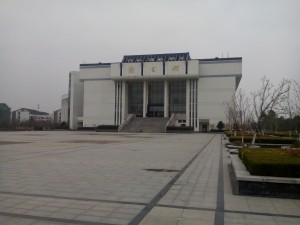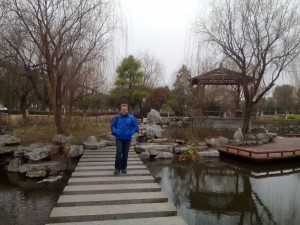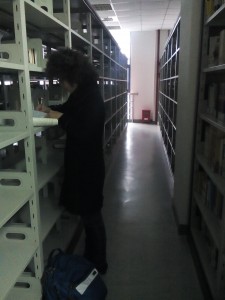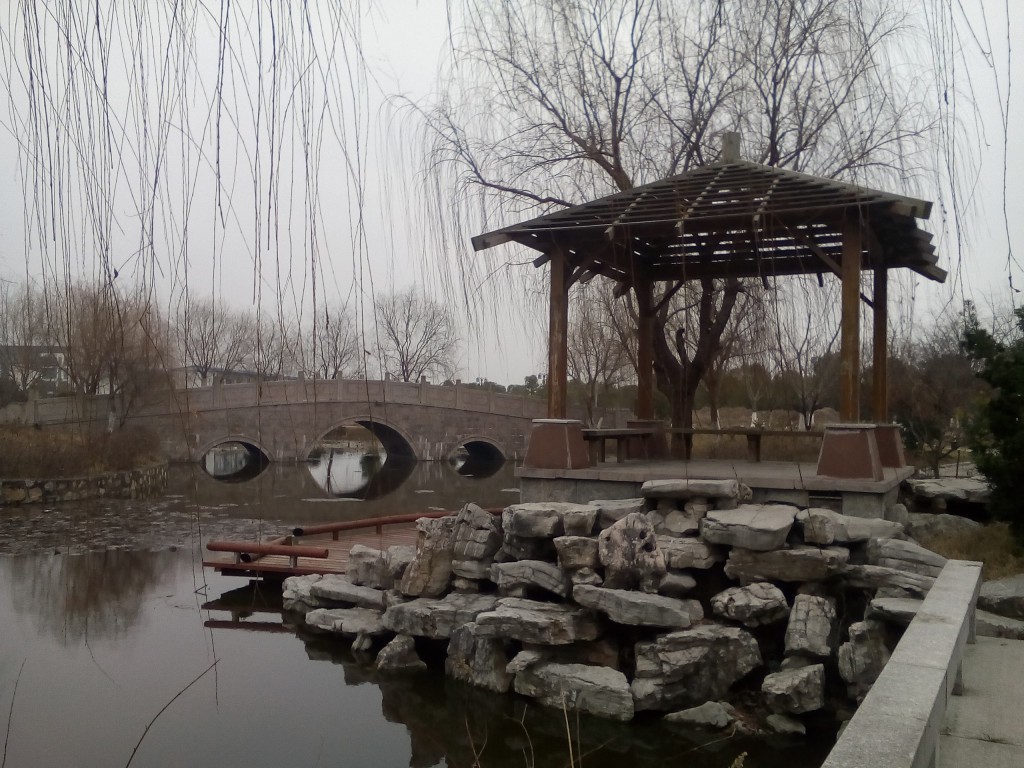So you were probably expecting a clever treatise linking Victorian literature and modern Asian economic theory? Sorry to disappoint you, but I have nothing to say about either of those topics. This title merely reflects the two unrelated elements that intersected with my life a few weeks ago and spurred me on to an unusual journey.
It started with the deepening dynamic of one of my wife’s academic pursuits. She had recently become interested in Chinese translations of Tess of the d’Ubervilles, and was writing an academic paper on the topic, critiquing different translation techniques. As part of her research, she needed to look at several different translations. After extensive searches in several libraries, she found most of what she needed. However, one particular version could only be found at the Suzhou University library. I always like to go where I haven’t been, so I agreed to accompany her. We took a bus and then the subway to the main campus. The Internet’s directions suggested that another bus was required, but that seemed strange, as we were already at the university. I suggested we go the library and take a look. The campus is very large, but we did eventually find the library. I waited in the lobby (no backpacks allowed inside!) while she searched. After about 20 minutes, she returned, not looking happy. The book wasn’t here, but rather, was housed on a satellite campus. We reverted back to the original instructions and hopped on the bus, wondering where this satellite campus was.
It turns out the satellite campus wasn’t even in the city. We rode the bus for about 50 minutes, crossing the city, eventually passing into an area of modern, suburban development. Glitzy shopping malls with flashing lights, expensive, pseudo-European condos, even a gated golf course – all the markers of an upscale suburbia were present. After passing through this area, we came to a sterile mixture of dull concrete, motorway overpasses, crossing at oblique angles, casting deep shadows on the rough farmland below. The farmland soon gave way to some old, rural villages. The architecture was traditional – the cracked and whitewashed two-storey buildings creating narrow alleys that intersected with the puzzle of canals. On the main street, but also spilling into the dark alleys, was a cacophonic bazaar of street vendors selling almost anything you would need: clothing, food, mobile phones, tires, bedding, haircuts.
Once past the village, we were briefly in open fields again, but then we encountered a series of institutional style buildings. Large, and mostly empty, these looked like government offices, warehouses, trade schools – glassy and grey, they presented an unreadable face to the nearly empty street. At the very last stop, the bus let us off. It was dark now, and there were few people around. We found the main gate to the campus, but were held up by the security guard who said the library was closed. My wife eventually convinced him to let us in, so we wandered around the dim, empty campus, stunned by the size and cold beauty of the place.
We came back the next day in the daylight. The library was really more of a warehouse. The front lobby was completely empty, devoid of any signs or staff, just a bare, marbled foyer. The heavy door labeled “Literature” let us into room full of shelves and one desk. The bored attendant at the desk ignored us so we proceeded into the maze of shelves. We eventually found what we were looking for, although the handwritten, call-number labels were not always easy to read. There were no photocopiers or desks, so my wife had to copy the needed information while standing at an empty shelf.
When we left, we took a tour of the campus. The buildings were constructed in the modernist style common in many parts of China – glass and steel and stone, but very little character. The grounds were spacious and veined with many meandering paths and bridges and ponds. The bare trees and murky sky deepened the solitude of the place. The school was on a semester break, so there was almost nobody around, but the campus emanated a feeling that it would look empty even when students were there.
I’ve seen a few of these large, underutilized infrastructure projects since I’ve been here. Their scale and ambition is always impressive, but one gets the sense when wandering through vacant hallways and empty plazas that these buildings are just waiting for something to happen. A library with books but no people feels cold.



